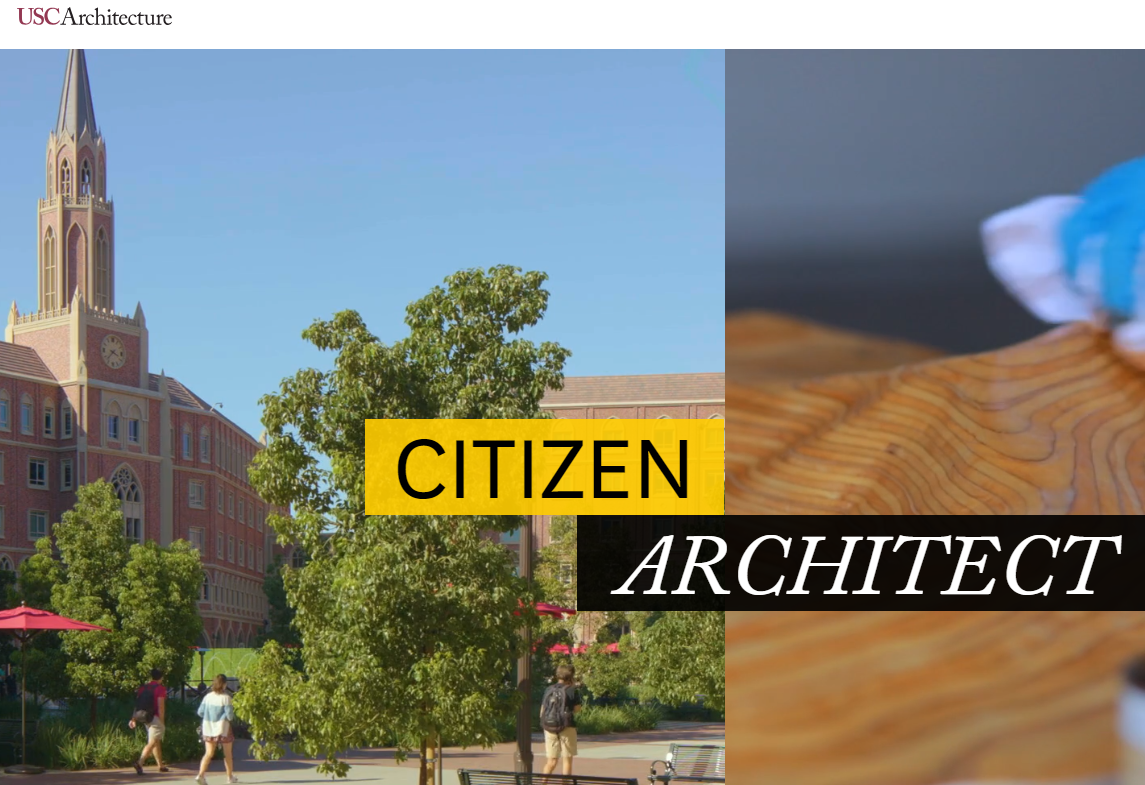Principal Phil Crompton and Senior Consultant Alexis Diamond were guest lecturers at the USC School of Architecture last week. Their topic was New and Future Healthcare Technologies presented to students of the graduate Healthcare Design course taught by Victor Regnier, FAIA.

Screenshot Capture of the USC Architecture Website
What does the Healthcare Design Course Cover?
Healthcare Design “focuses on the design of a diverse collection of hospital and community settings for healthcare” and introduces students to healthcare building types ranging from major trauma centers to small scale community outpatient facilities. The course also traces the evolution of healthcare facilities from the Greek period in 500BC to the present day while examining today’s challenges and future trends that will impact the industry.
Victor Regnier is a professor with a joint appointment between the Schools of Architecture and Gerontology, and his expertise in healthcare and aging has made him an internationally recognized scholar, researcher and design consultant. Victor engages his students by facilitating site visits to local healthcare organizations, including Cedars Sinai Medical Center, and guest lectures from local architects (and technology consultants!) focusing on specific components of design in the healthcare environment, bringing a real-world perspective to the class.
What is the Hospital of the Future?
Alexis and Phil started out the presentation by looking at how healthcare has changed since the mid-1800s through the current day and demonstrated how the TV show Star Trek actually predicted several technologies that we take for granted today.
They also identified how healthcare facilities of the future will offer the highest quality of care possible by:
- Providing Ubiquitous Access to Information at the Point of Care
- Delivering Improved Patient Safety
- Empowering the Patient and their Family
- Enhancing Staff Satisfaction
- Optimizing Information Flow, Workflow and Process
All of these goals will involve tight coordination with the clinical and information technologies in hospitals and medical centers.
What New and Future Healthcare Technologies Should We Be Planning For?
Phil and Alexis then covered some of the technologies currently being implemented (or recently implemented) by Vantage clients. As part of the discussion, Phil and Alexis provided examples of how they approach visioning for Healthcare Technology projects which help stakeholders make informed future-looking technology decisions. These “Day in the Life” scenario reviews examine the workflows, processes and technologies that can improved the life of a patient, nurse, doctor and family members.
The healthcare technologies discussed included:
- Wayfinding
- Digital doorways
- Transparent displays
- Internet of (Healthcare) Things (IoHT)
- Real Time Location Systems (RTLS)
- Augmented Physical Security
- Patient and family engagement
- Video footwalls
- Command centers

Video Footwalls were one of the future technologies discussed
Alexis and Phil also discussed how multiple technologies can be combined to deliver a solution that is greater than the individual pieces. An example of this is leveraging the building itself to serve as a caregiver and an integral part of the care team by tracking patients, reminding them to return to their rooms and keeping them from accessing spaces that are off-limits.
Wrapping up the discussion was how healthcare is being extended to the home and beyond. Using IoT sensors and telemedicine, it has been shown that recovery times can be reduced and outcomes improved when patients can continue their hospitalization at home. Extending healthcare beyond the home is accomplished with connected health devices via smartphone and smartwatch applications, wearable technologies that constantly track activity and vital signs and predictive analytics that allow first responders and medical staff to preempt emergencies.

